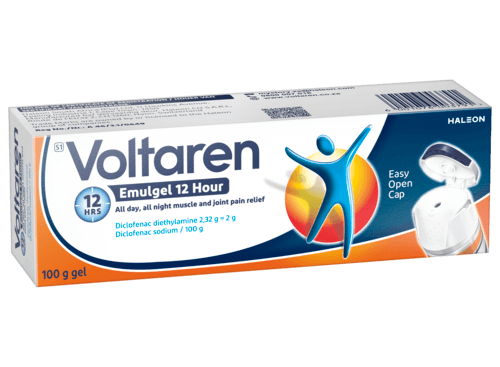Pain relief comes in all shapes and sizes. Different types of body pain mean different types of treatment. Learn all about the type of pain you’re experiencing so you can choose the best treatment to get you back to doing those little (and big!) things that put a smile on your face, a song in your heart, and a skip in your step.
What are the best pain treatments for you?
Finding effective pain treatments can feel like an urgent mission when you’re experiencing pain. While we love taking a glass-half-full approach to life, looking on the bright side of pain is not always easy. Nor is it always beneficial. Often, pain serves a purpose and ignoring it can have negative consequences, not to mention impact how your day/week/month is going. Figuring out the best pain treatments for your pain type can be challenging. We’re here to help.
We understand that finding the right pain treatment means so much more than just being pain free. It can mean not giving up on cooking a holiday meal for loved ones or gossiping with a friend on a walk around the block. It can mean living your life joyfully, without having to give up on the things you love. That’s why we’re here to help you make sense of what pain is and how to manage it.
What is pain?
Let’s dive in. Pain is an important part of how our bodies function. It can let us know that something isn’t quite right.1 In doing so, body pain alerts us to protect ourselves from further harm by prompting us to stop what we’re doing, take stock, and avoid repeated injury or permanent damage to our bodies. Pain is what can keep us from making our situations worse than they need to be.
Pain is controlled by the nervous system and is a very complex process. It occurs when an external stimulus, for example, touching a hot pan, triggers receptor nerve cells to send messages through your spinal cord to your brain. These receptors can sense heat, cold, light, touch, pressure -- and pain! Pain is always subjective. So, each of us experiences pain in our own way. Depending on its severity, as well as your body’s very own unique way of processing it, pain can bring about other physical symptoms, like nausea, dizziness and weakness.
Chronic pain, or pain that lasts for three months or more, differs from acute pain, or the temporary type of pain you may feel from an injury or strain.2 Chronic pain is pain that has outlasted normal healing time.3 Chronic pain often doesn’t serve a purpose in keeping you immobilized in order to prevent further injury. It often is residual pain from an underlying condition or a past injury, and is no longer a warning sign.
Although it hurts, some conditions can’t be cured, and therefore treating the pain in order to move through it is necessary to maintain your quality of life. In this situation, it’s not a case of ‘no pain no gain’ - toughing it out isn’t necessarily the best course of action.
Being in pain – especially chronic pain – can have quite an emotional impact. Pain can affect how you go about your daily life, keeping you away from activities you once enjoyed. It can also hamper your quality of sleep. Being sleep deprived has ties to poor short- and long-term health markers and decreased mental well-being.4
What are the differences between acute pain and chronic pain?

Acute pain typically comes on suddenly and is a sign that your body has suffered some kind of damage. Maybe you strained your back picking up a box, or even just stubbed your toe. Or maybe you just twisted your neck the wrong way. (We hate when that happens!)
Acute pain is short-lived and should go away once the injury has healed. Short-term pain treatments will keep you feeling comfortable until your injury heals.

Chronic pain lasts longer than acute pain and is sometimes resistant to pain treatments. It is usually associated with a long-term illness. Unlike acute pain, chronic pain tends to be related to dysfunctions or diseases that stay around for a while. If you think you may be experiencing chronic pain, you should consult your doctor to get to the root of what is causing it.
| Acute pain | Chronic pain |
Short-lived |
Long-lasting (more than 3 months) |
Usually the result of an injury |
Usually the result of an underlying condition or long-term illness |
Examples of acute pain causes: sprains, cricked necks |
Examples of chronic pain causes: Lyme’s disease |
Responds well to pain treatments |
Can be resistant to pain treatment |
Pain can be focused on a specific location on your body. Each of these requires slightly different care and treatment, sometimes merely due to how we tend to move and use our bodies. Here are some of the most common pain locations:
- Back pain: Back pain is a common cause of body pain. Affecting some of the largest muscles in your body, back pain can have a big impact on how you move about your day.
- Neck pain: From a crick to a strain, neck pain can be, well, a pain in the neck! From poor posture to simply turning your head wrong, neck pain can seem like it came out of nowhere.
- Wrist pain: We use our wrists all day long. Complex structures that they are, our wrists are prone to painful problems.
- Shoulder pain: Whether its injury or sleeping on it funny, our shoulders are prone to strains and sprains. Shoulder pain can take the flourish out of daily movements.
- Ankle pain: Our ankles get a lot of use day in and day out. That’s why ankle pain is no walk in the park.
- Hip pain: The hip is one of the largest weight-bearing joints in the body, which is why hip pain can be so common.5
- Leg pain: Leg pain can cause partial or total immobility making it painful to carry out everyday activities like walking the dog, climbing upstairs, running for the bus or playing sports.
- Knee pain: Our knees do a lot for us on a daily basis. That’s why knee pain has a way of really stopping us in our tracks.
- Foot and ankle pain: Our feet and ankles are fine-tuned structures full of little bones and muscles, making them susceptible to a range of potential injuries.
- Muscle pain: Whether it’s a pulled muscle from a vigorous go at the gym or we just stood up funny, muscle pain has a way of making its presence known throughout the day.
- Joint pain: Stiff, achy joints are a common cause of pain and can increasingly keep us from doing the things we love.
- Common injuries: Some injuries are more common than others (think landing wrong on your foot and twisting your ankle or waking up with a stiff neck. Ouch!).

Managing your pain is key to living life joyfully and to the fullest. This can include both medicated and non-medicated alternatives, or even a combination of the two. Here are some straightforward pain management techniques that are easy to incorporate into your repertoire:
- Stretching
- Therapeutic massage
- Light exercise
- Mindfulness meditation
- Cold and heat
- Biofeedback6


